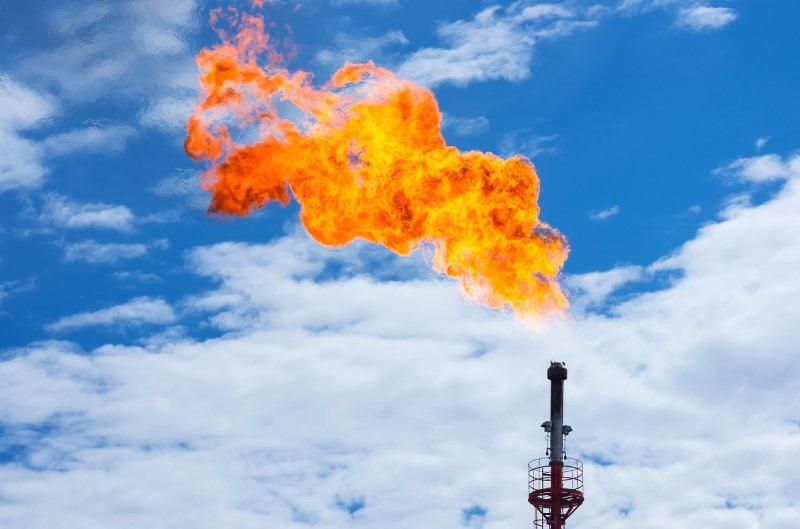Natural Gas Flaring in Permian Hits Record High in Q1
(Reuters) - Natural gas flaring and venting in the top U.S. oil field reached an all-time high in the first quarter of the year due to the lack of pipelines, at a time of increased focus on environmental concerns about methane emissions.
Producers burned or vented 661 MMcfd in the Permian Basin, the field that has driven the U.S. to record oil production, according to a new report from Rystad Energy.
The Permian's first-quarter flaring and venting level more than doubled the production of the U.S. Gulf of Mexico's most productive gas facility, Royal Dutch Shell’s Mars-Ursa complex, which produces about 260 to 270 MMcfd of gas.
A lack of pipelines and pipeline outages drove the first quarter numbers to a new record as pipeline construction in the Permian has not kept up with output.
"It’s a very persistent issue with infrastructure," said Artem Abramov, head of shale research at Rystad.
The Permian is expected to flare more than 650 MMcfd until the second half of the year when the Gulf Coast Express pipeline comes online, Abramov said. The Gulf Coast Express is designed to transport up to 2 billion cubic feet of natural gas and is scheduled to begin operations in October.
"It will be a temporary solution," said Abramov. "We don’t have any other major project coming online until late in 2020."
The Bakken shale field in North Dakota also continued to flare a high level in the first quarter, around 500 MMcfd, according to Rystad.
Together, the two oil fields on a yearly basis are burning and venting more than the gas demand in countries that include Hungary, Israel, Azerbaijan, Colombia, and Romania, according to the report.
The Bakken "has been a challenge for many years," Abramov said. "It’s hard to propose a new source of gas demand in that area. It’s hard to connect the Bakken to the Gulf Coast, and the Gulf Coast is where gas demand is growing."
Several oil and gas companies have pledged to limit leaks of methane, a potent greenhouse gas, and to reducing flaring and venting.
Related News
Related News

- Keystone Oil Pipeline Resumes Operations After Temporary Shutdown
- Biden Administration Buys Oil for Emergency Reserve Above Target Price
- Enbridge to Invest $500 Million in Pipeline Assets, Including Expansion of 850-Mile Gray Oak Pipeline
- Freeport LNG Plant Runs Near Zero Consumption for Fifth Day
- Williams Delays Louisiana Pipeline Project Amid Dispute with Competitor Energy Transfer
- Evacuation Technologies to Reduce Methane Releases During Pigging
- Editor’s Notebook: Nord Stream’s $20 Billion Question
- Enbridge Receives Approval to Begin Service on Louisiana Venice Gas Pipeline Project
- Russian LNG Unfazed By U.S. Sanctions
- Biden Administration Buys Oil for Emergency Reserve Above Target Price





Comments